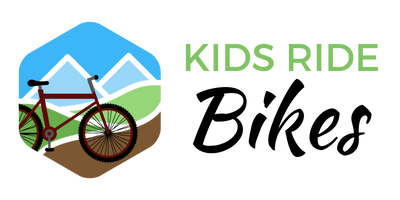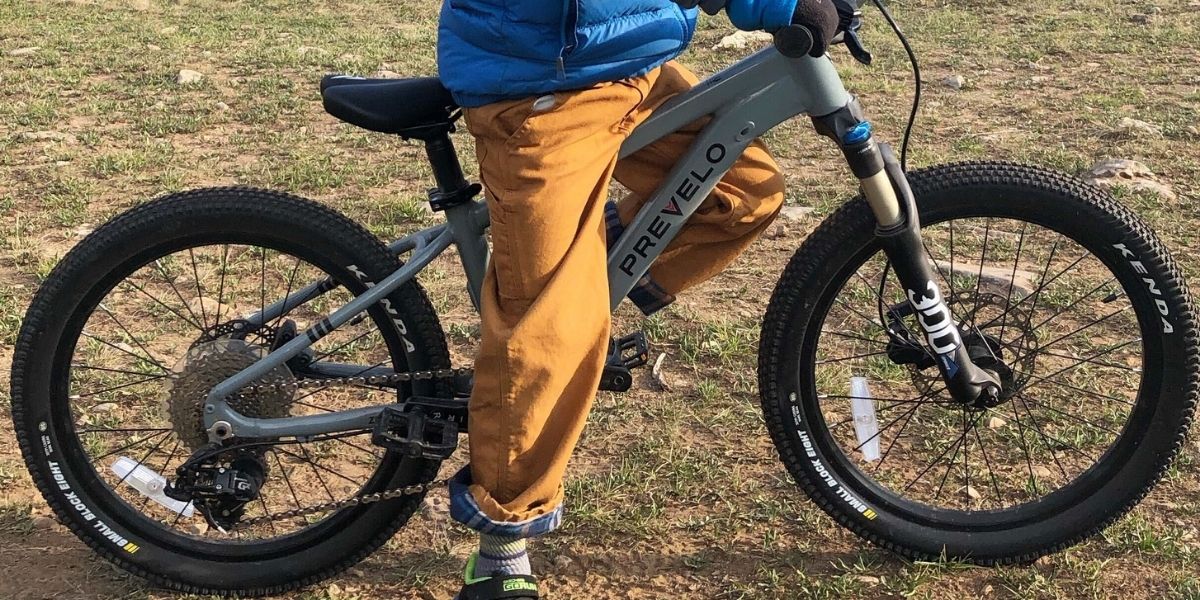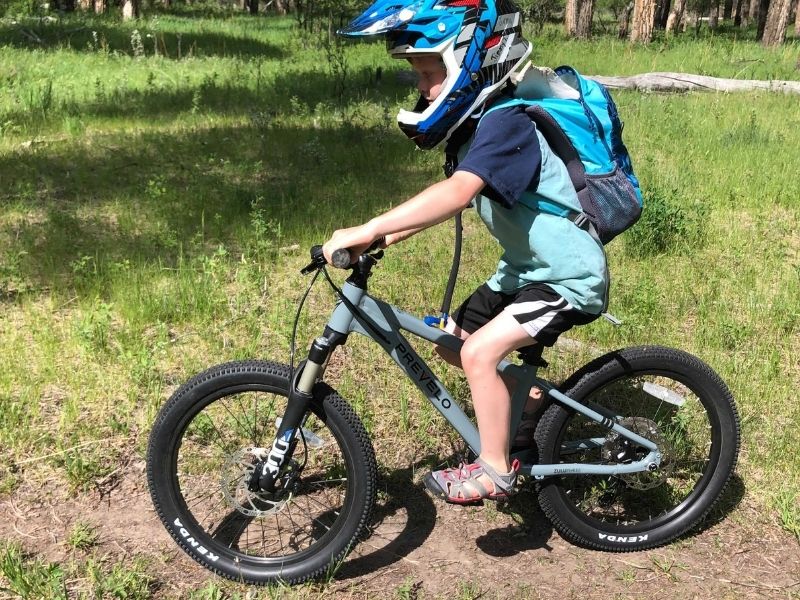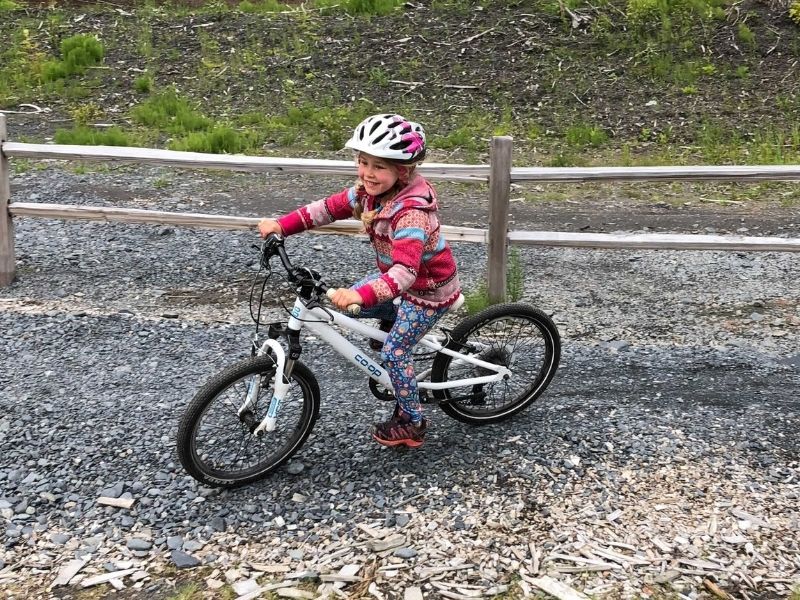How to Pick the Right Bike for your Kid
Our oldest daughter, Kylie (age 5), is currently riding a Prevelo Alpha 2 (with 16-inch wheels), but she is about too big for it and will need a bigger bike for her next birthday. So my husband and I have started to look into what bike with 20-inch wheels is coming next. SO MANY CHOICES!
Our family enjoys neighborhood bike rides, but have been getting back to riding more single track since we can now do it as a family (thanks to the Shotgun seat for our youngest).
When we started looking for her next bike, we were looking for something that she could use on the trails a little better, but also still ride around town and we discovered there are LOTS of kids’ bikes out there with different specs and components on the bike.
There are lots of things to consider when it comes time to upgrade your child’s bike. While this article isn’t going to give you the “best” bike to buy, we do hope that we can provide you with some valuable information as you are researching your child’s next bike.
Hopefully it will help you narrow down your choices based on some options that you would like for that next bike. A good bike is a bike they will ride!
As an Amazon Associate and member of other affiliate programs, we earn from qualifying purchases.
Important note about kids on bikes
Here at KRB we fervently believe in teaching kids to pedal a bike without training wheels. These tips will help since the process can be a bit tricky. This is easiest done by first learning on a balance bikes to gather a good sense of balance.
Kids all learn to ride at different rates, so don’t worry if they don’t catch on right away with their first pedal bike. The main thing is to teach them a love of biking.
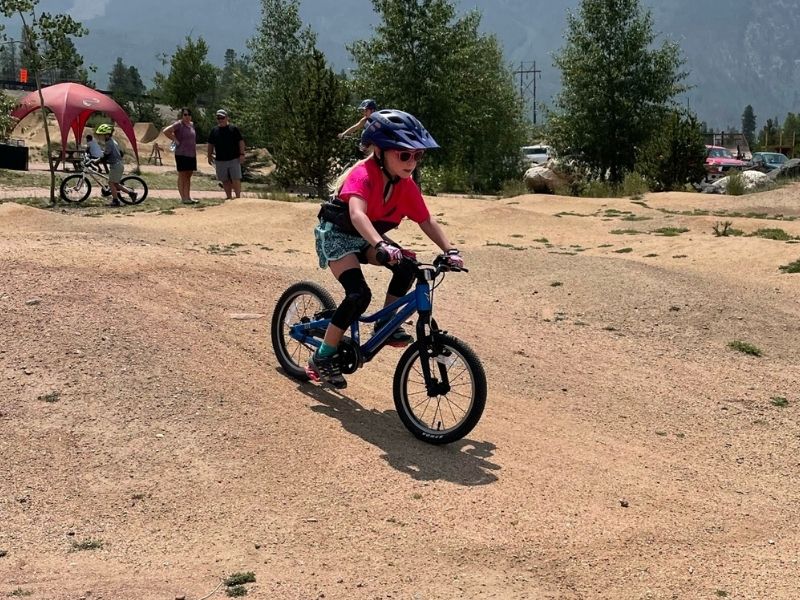
How on earth do you figure out what you need for your kid?!
The first step is figuring out the correct size bike your child will need, then decide what style of bike will be best for your child. For kids bikes, they are sized by their tire size, so a 16″ bike has a 16″ tires, 20″ bike has a 20″ tire and so on.
What is the correct size bike for my kid?
The most accurate way to figure out the perfect bike size is going to be based on the child’s inseam measurement (not necessarily their overall height), but can vary between manufacturers. Use a tape measure to get an accurate measurement for the right fit.
Make sure to check the sizing guide for standover height for each brand because your child could be on a 16″ in one brand but 20″ in another. Getting the perfect fit and frame size on the right bike really is crucial for happy kids since the wrong bike size can mean a frustrated rider.
Once you child gets a little bigger and gets into adult bikes bikes are sized by frame and you will see XS-XL bike sizes and the measurement and fit is a little different.
Consider where your kid will be riding
Before we get into what to look for, ask yourself some questions about your family’s riding style and your child’s ability. Does your family enjoy lots of neighborhood rides on paved roads or are you a single-track family? Is it pretty flat or very hilly where you typically ride? Is your rider pretty timid and would do better with a more upright position or do they like to send it in an aggressive stance?
Now as you read through this post, keep in mind the answers to those questions.
Consider the weight of the bike
Something to strongly consider when choosing your child’s next bike is the weight of the bike itself compared to its rider. For small children and young children, finding a lightweight bike will be very important to their success especially for just starting and then longer rides. Most big box store bikes have a steel frame, making them the heaviest options.
For example, my 5yo weighs about 45 pounds. A 30 pound steel frame bike 66% of her body weight, could you imagine trying to handle a 65-80+ pound bike as an adult?! A bike around 23 pounds is about half her weight and the lightweight Woom Off 4 is only 38% of her body weight.
(about the proper geometry of kids bikes) Kids steer their bike by “pushing” the handlebar left and right and “response leaning” rather than leaning and “response countersteering” like adults do. This combined with the lower strength of a child relative to an adult means that the steering and handling needs to be quicker and more responsive than a “normal” mountain bike.
Salsacycles.com
Types of frames for kids bikes
Most bikes are made from either steel, aluminum, or carbon fiber. Most quality children’s bikes are made from aluminum and it’s rare to find a full carbon fiber frame for a kids bike (plus, that’s a lot of money for a bike that might only last 1-3 years).
You can find carbon forks on some higher end kids bikes though. Here is a great article explaining bike frame materials.
Steel bikes are typically found at big box stores. Steel is strong, but heavy and prone to rust over time. Due to its weight, steel bikes are not normally recommended for kids, especially younger kids. The heavier the bike, the harder it is to handle.
Aluminum is the most common bike frame material and is mostly what will come from a bike shop. They are lighter than steel, which makes them easier to control. They are also less prone to rust, which is great because your kid will scratch the paint sooner than later, and love to ride through puddles.
Carbon fiber is the lightest material for bikes, but full carbon frames typically are not found until adult bike sizes. Carbon fiber is also very expensive and can be damaged from crashes (which your kid will do, over and over and over again). Although some carbon fiber damage can be repaired, I wouldn’t drop the money on a carbon frame kids bike to start with.
Tire width and tread for kids bikes
Kids bikes come with a range in tire sizes. It’s important to choose a bike tire that fits the style and terrain of riding your family likes to do.
Narrower tires are best for paved roads and wider tires with a lower PSI (pounds per square inch) will make trail riding more enjoyable for your little ripper.

Wider tires provide more surface area in contact with the ground for better balance. They also can be run at a lower tire pressure and absorb more bumps for the rider. They however will drag and slow down riders on pavement, meaning little kids will have to work harder to keep up.
Just because your kid’s bike came with a certain tire size doesn’t mean you are stuck with it. Check with your local bike shop to see if you can put wider or narrower tires on the current rims, chances are you can make some changes.
The only issues you might have is if you have a BMX 20’’ as they tend to have wider rims and putting smaller tires would be difficult, similar to changing fat tires to skinny tires.
Bottom line: If you ride really rocky, root filled or bumpy terrain opt for wider tires at a lower PSI. If you are mostly paved roads or smooth terrain, opt for narrower tires that can run at a higher PSI.
If you are like us and ride both road and bumpy single track, look for something in the middle. We are looking for a bike with tires in the 2.25-2.5″ width range. Tires also have a PSI range that they can be filled with. When riding smooth surfaces you can increase the PSI to the max range and when riding bumping, decrease PSI to the minimum to give a little more shock absorption.
Braking system:
For all brakes for kids bikes, we highly recommend not using coaster brakes and going right to hand brakes as soon as possible. They are safer and best to learn from an early age. Kids will need to build some hand strength if they haven’t used hand brakes before, so start with small rides as they get the hang of it.
The most common type of brake out there are Rim or V-brakes. They are budget friendly, easy to fix and what is on most children’s bikes. Starting at 16” bikes you may start to see disc brakes on some bikes (like the Prevelo Zulu 2), but they are still not too common on kids bikes.
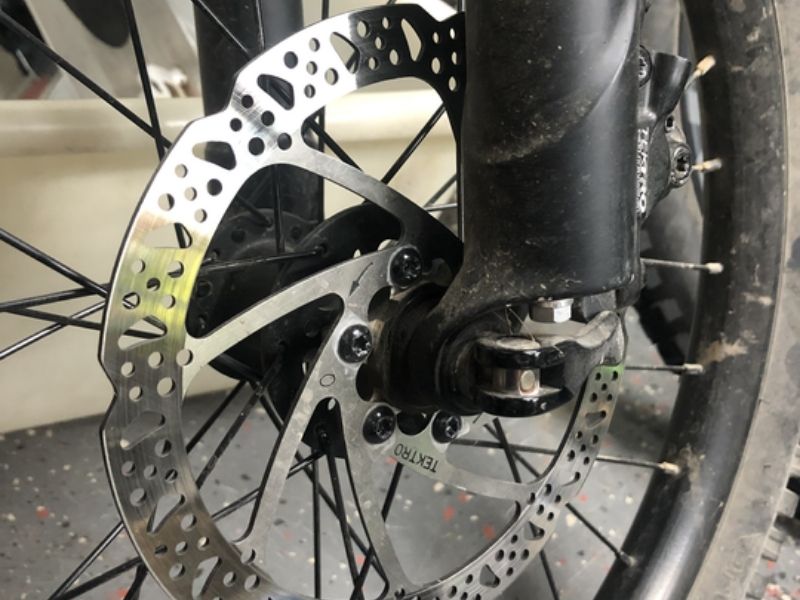
Rim or V-brakes (they are the same) are easy to fix and are budget friendly. Nicer bikes will also have a reach setting that can be dialed in for smaller hands. When you can adjust the reach, it helps the rider not “panic pull” the brake simply because they can’t fully reach the lever. Some bikes (like Woom) have made brakes sized for smaller hands.
Disc brakes are best for all conditions of riding. Disc brakes have the advantage in wet weather and have better stopping power than rim/V-brakes. There are two types of disc brakes, hydraulic and mechanical.
Hydraulic brakes have better stopping power, especially if you are riding a lot of downhill, and tend to be lighter weight.
Mechanical brakes are easier and less expensive to service and adjust, however, these sometimes can be harder for young kids to pull with tiny hands.
If you are looking for a more in depth comparison on brake types, check out this article.
Gears and Shifters:
Typically you don’t see gears until 20” kid’s bikes. There are two main types of shifters you will see on kids bikes, grip shifters and trigger shifters.
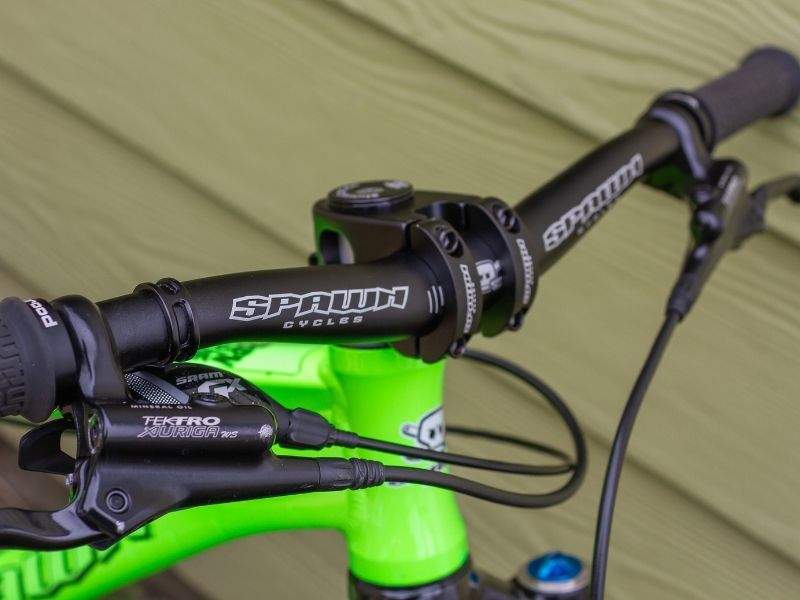
Grip Shifter: These are the kind where you rotate the whole grip to change gears. They are cheaper than the trigger style and easier to replace if damaged. However, they are harder to damage in a crash because there are no levers to snap off. Downside, is they can be extremely hard for kids to twist and wouldn’t be a great pick for a kid that might have weaker wrists.
Trigger Shifter: These are more common than grip shifters and can actually be installed on any kids bike aftermarket (if you don’t want the grip shifters). Some riders cannot twist and ride so this is a very easy solution if the bike is the right size but the rider is having trouble with gears.
Suspension for kids bikes:
As you get into 20” mountain bikes, you will start to see options with suspension for older children. Does your rider need suspension? Well, this is where you need to look at your rider again. If you have a pretty advanced or aggressive rider, you may want to consider front suspension.
However, most kids (especially younger) do just fine on a rigid bike and learn a lot of fundamentals when they don’t have suspension to cushion.
Also, front suspension isn’t really effective until kids are older and actually have enough mass to compress the suspension to get any benefit from it. Shocks also add weight to the bike and require maintenance. However, higher end forks will likely be lighter weight and may be adjustable to the rider’s weight (so they are actually effective).
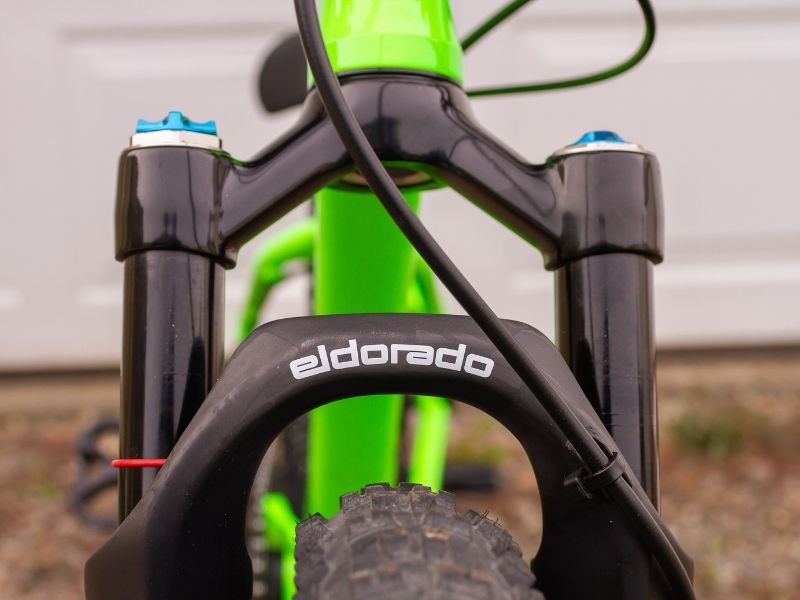
There are two types of suspension commonly used, air and coil.
Air suspension: Uses pressurized air in a chamber to absorb impact. This will be the more expensive option but you can dial in suspension for a smaller body weight better. Would probably be most helpful for advanced riders and lightweight riders.
Coil suspension: As it sounds, it uses a wound steel coil to absorb impact. It will help with shock absorbtion in the rider’s arms. While coil suspension can be nice for kids who are timid riders, some lighter riders won’t really be able to compress much on the fork and there isn’t a lot of adjustment available without changing the spring to a softer or firmer one. This makes it unnecessary for some riders and just adds more weight overall to the bike without a lot of benefit.
Rigid fork: A rigid fork makes for a lighter bike and helps the kids learn to steer better. Some bikes come with the fork as the same aluminum as the bike, others come with a carbon fork to make the bike even lighter. Carbon forks help take some of the vibrations out of the ride and help the rider learn how to use their arms over obstacles while not getting as much vibration feedback.
Bike Comparison Chart
This chart gives some common 20″ kids mountain bikes and their price, weight, and specs. You can see how different components affect the price and weight, all things to consider when looking for your child’s next bike! All bikes below have an aluminum frame.
| Bike: | MSRP: | Weight: | Brakes: | Tire Width: | Front Fork: | Shifter: |
|---|---|---|---|---|---|---|
| Cannondale Trail 20″ | $450 | 24 lb. | V-brake | 1.95″ | Coil – Alum. | 7 Speed Grip |
| Cannondale Cujo 20+ | $550 | 21.6 lb. | Mechanical Disc | 2.6″ | Rigid – Alum. | 7 Speed Grip |
| Co-op Cycles REV 20″ | $379 | 23.9 lb. | Mechanical Disc | 2.6″ | Rigid – Alum. | 6 Speed Grip |
| Kona Honzo 20″ | $725 | 24.3 lb. | Hydraulic Disc | 2.6″ | Coil – Alum. | 7 Speed Grip |
| Prevelo Zulu 3 20″ | $949 | 22.9 lb. | Hydraulic Disc | 2.1″ | Air – Alum. | 10 Speed Trigger |
| Prevelo Zulu 3 Heir 20″ | $1249 | 21.2 lb. | Hydraulic Disc | 2.25″ | Air – Carbon | 10 Speed Trigger |
| Salsa Timberjack 20″ | $449 | 23 lb. | Mechanical Disc | 3.0″ | Rigid – Alum. | 8 Speed Grip |
| Spawn Yama Jama 20″ | $1275 | 21.5 lb. | Hydraulic Disc | 2.2″ | Air – Carbon | 10 Speed Trigger |
| Specialized Jett 20″ | $550 | 19.3 lb. | V-brake | 2.0″ | Rigid – Alum. | 7 Speed Trigger |
| Trailcraft Blue Sky 20″ | $1599 | 18.75 lb. | Hydraulic Disc | 2.25″ | Air – Carbon | 10 Speed Trigger |
| Woom Off 4 20″ | $799 | 17.2 lb. | Hydraulic Disc | 2.25″ | Rigid – Carbon | 9 Speed Trigger |
| Woom Off 4 Air 20″ | $949 | 19.9 lb. | Hydraulic Disc | 2.25″ | Air – Carbon | 9 Speed Trigger |
Where to buy your next bike:
If you want to be able to see, touch, and feel a bike before purchasing, head to your local bike shop! Some brands that are typically found at local bike shops are: Trek, Giant, Specialized, Salsa, and Kona.
If you are OK purchasing online and can handle a little assembly on your own, check out our favorite “direct to consumer” brands like: Woom and Prevelo
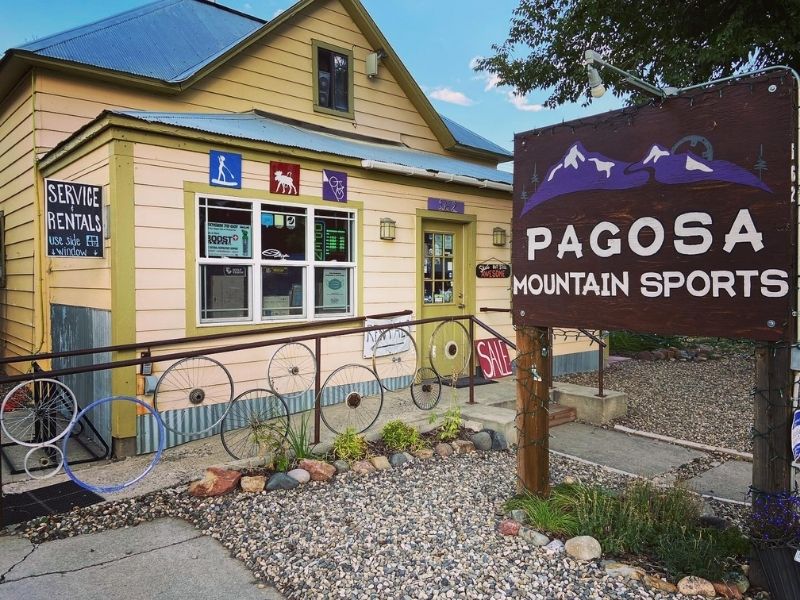
I would not recommend heading to your local big box store. It’s a common mistake to just want to get them on a cheap bike. But the bikes they carry are typically heavy and use poor components that will leave you wishing you bought something a little nicer. They also may have been assembled by someone who knows nothing about bikes.
Amazon also shouldn’t be your first stop when looking for a bike. Although we love Amazon for just about everything else, they mostly carry what the big box stores carry or knock-offs.
If you go this route please take it to a local bike shop just to go through a safety check. Most shops will do this for free because of course kids on bikes is better than no kids on a bike…. Even if the bike didn’t come from their shop.
Beware of Knock-Offs!
Yup… just like you could get a pair of $5 “Oakleys” you can get cheap knock-off bikes on the internet. Knock-off bikes look the same and give the appearance of a brand name bike, but are sold under a “no-name” brand or have a similar brand name with a few letter difference. For example, a knock-off bike might use “Shimana” or “Shinano” components instead of Shimano.
The companies that make knock-offs are not into making better bikes, they are just into making a quick profit without putting in the work in advancing the biking world. Knock-offs often use inferior components (even if they claim to have the good stuff) and are likely assembled overseas by someone who might not know how (or care) to properly tighten up everything to make sure it is safe.
Just a reminder, nicer bikes have a higher resale value! With lower end bikes that are only a few years old, you might be lucky to get 50% back on resale, most likely 25%. Most higher end bikes that have been taken care of should resell for over 50% of the original value.
Now get out on that new bike!
Whenever you get your next bike, make sure to stop into your local bike shop and have them look it over to make sure everything is assembled and tightened properly before you hit the trail. An awesome bike shop will probably even give your kid’s bike a free safety check, because in the end they just want more kids on bikes too!
Huge thanks to my friend, bike shop-owner and mechanic, Amanda, at Pagosa Mountain Sports in Pagosa Springs, CO for helping me get this post out.
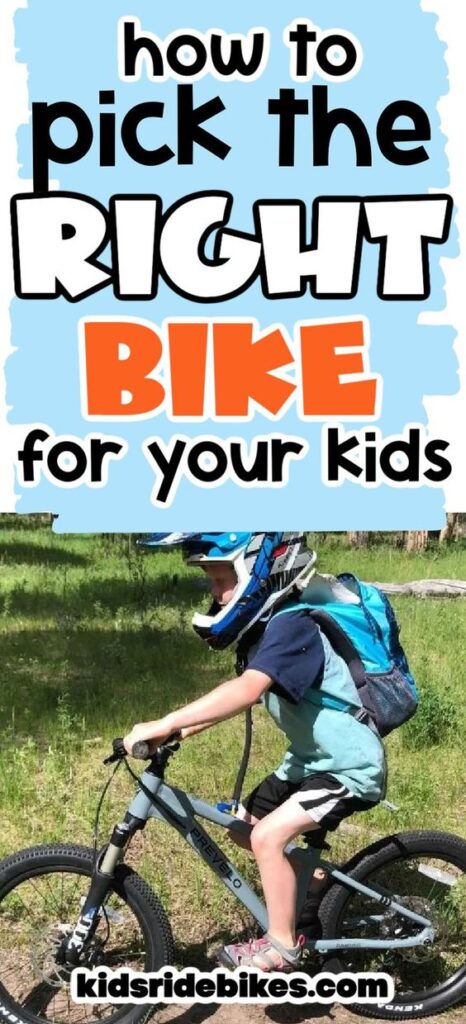
Related Links
- Teach a Child to Pedal a Bike
- What To Do If Your Child Struggles With Riding a Bike
- Beginner’s Guide to Family Biking
- Best Bike Helmets for Kids
Choosing Your Child’s Next Bike
© 2021, Kids Ride Bikes. All rights reserved. Republication, in part or entirety, requires a link back to this original post and permission from the author.
